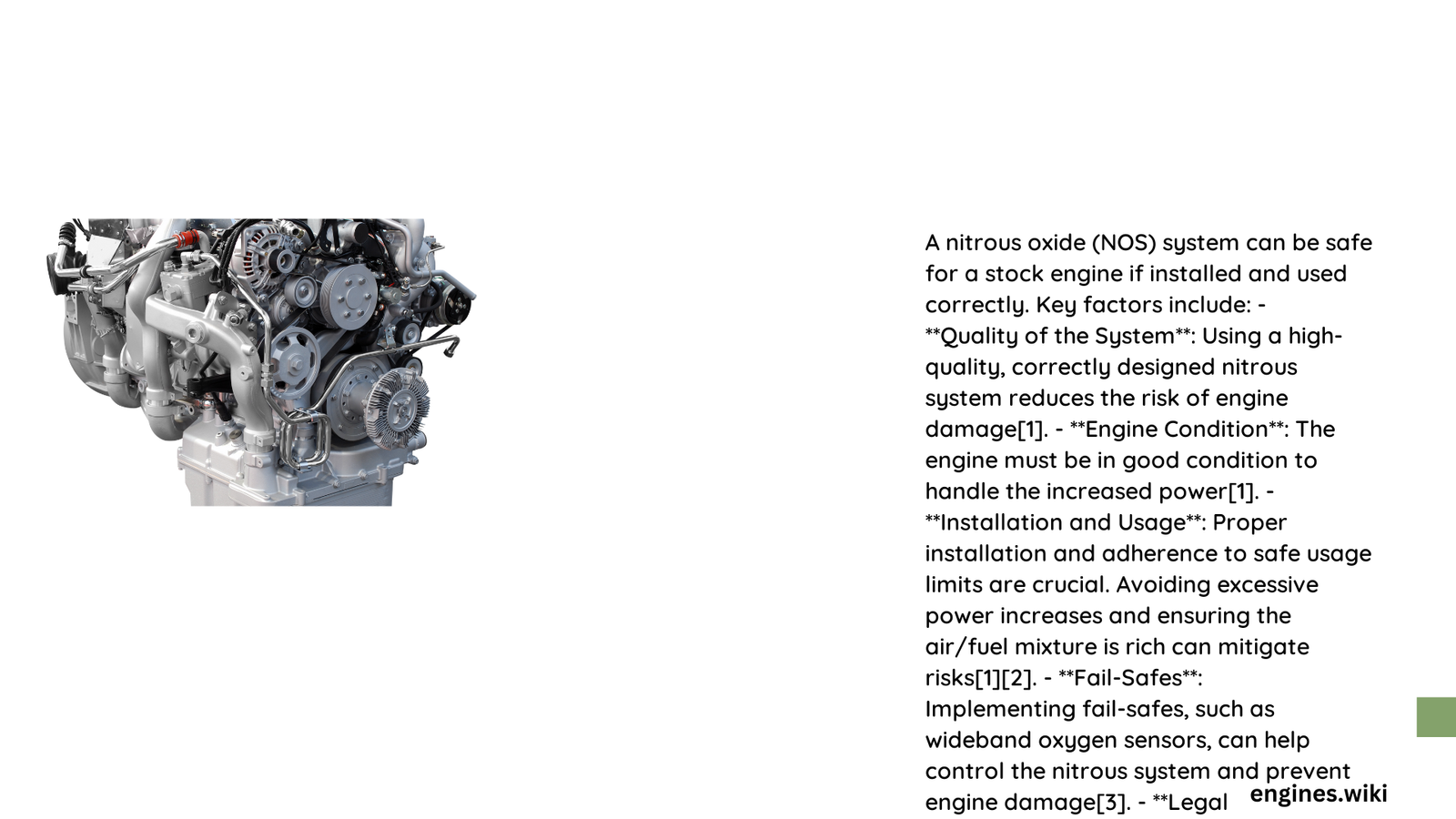Nitrous oxide (NOS) can dramatically enhance engine performance, but its application on a stock engine involves complex safety considerations. While NOS offers substantial horsepower gains ranging from 50 to 300 hp, it simultaneously introduces significant mechanical stress that can potentially compromise engine integrity. Understanding precise pressure ratings, fuel system compatibility, and necessary modifications becomes crucial for preventing catastrophic engine failure.
What Makes NOS Potentially Risky for Stock Engines?
Can Stock Engine Components Handle Nitrous Oxide Stress?
Stock engines are typically designed with conservative performance parameters. When introducing nitrous oxide, several critical factors determine safety:
- Mechanical Limitations
- Standard pistons might crack under increased cylinder pressure
- Connecting rods risk bending or breaking
-
Crankshaft experiences heightened rotational stress
-
Thermal Management Challenges
- Increased combustion temperatures
- Potential for premature detonation
- Higher risk of engine knock
What Pressure Ratings Indicate Safe NOS Usage?
| Nitrous Bottle Pressure | Safety Indication | Recommended Action |
|---|---|---|
| 900-1000 PSI | Optimal Range | Monitor Consistently |
| Below 900 PSI | Potential Inconsistency | Check System Integrity |
| Above 1000 PSI | High-Risk Zone | Immediate System Inspection |
How Does Ignition Timing Impact NOS Safety?
Proper ignition timing becomes paramount when using nitrous oxide. Experts recommend:
- Retard timing by 1.5-2 degrees for every 50 hp of nitrous
- Use nitrous-specific spark plugs
- Implement two-step colder heat range plugs
What Fuel System Modifications Enhance Safety?
Fuel System Upgrade Requirements
- 4-6 Cylinder Engines
- Premium pump gas: Up to 75 hp
-
Racing fuel: Above 75 hp
-
8 Cylinder Engines
- Premium pump gas: Up to 125 hp
- Racing fuel: Above 125 hp
What Additional Safety Equipment Prevents Catastrophic Failure?
Critical safety equipment includes:
– Blow-off valves
– Pressure monitoring gauges
– Wideband oxygen sensors
– Electrical fail-safe mechanisms
Can Stock Engines Survive Long-Term NOS Usage?
Long-term NOS usage depends on:
– Engine build quality
– Consistent maintenance
– Proper tuning
– Conservative power settings
Recommended Upgrades for Enhanced NOS Compatibility
- Reinforced connecting rods
- High-strength pistons
- Enhanced crankshaft
- Upgraded fuel injectors
- Robust fuel pump
Final Performance and Safety Considerations

While NOS can transform a stock engine’s performance, it’s not without risks. Careful implementation, consistent monitoring, and strategic modifications can mitigate potential damage. Professional consultation and gradual power increases are strongly recommended.
Pro Tip: Never exceed 25-30% of your engine’s stock horsepower without comprehensive reinforcement.
Potential Consequences of Improper NOS Installation
- Catastrophic engine failure
- Bent connecting rods
- Cracked pistons
- Compromised cylinder walls
- Excessive wear on internal components
Conclusion
NOS can be safe for stock engines when implemented with meticulous planning, appropriate upgrades, and continuous monitoring. The key lies in understanding your specific engine’s limitations and respecting its mechanical boundaries.
